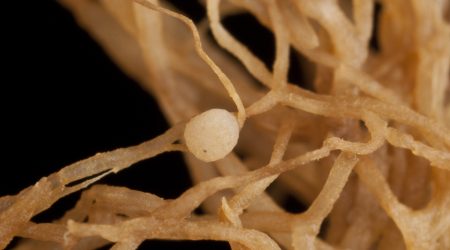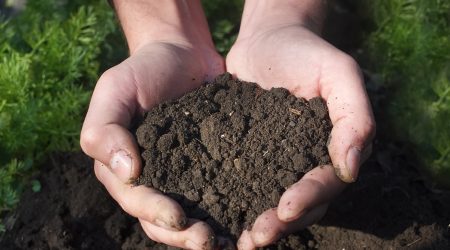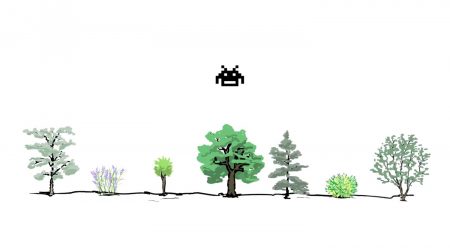2020 is the International Year of Plant Health
Designated by the Food and Agriculture Organisation (FAO) of the United Nations, it is a global campaign to highlight the role of healthy plants in protecting the environment, facilitating trade and enhancing food security.
Professor Mark Banfield, the recently appointed leader of the BBSRC-funded Institute Strategic Programme (ISP) for Plant Health at the John Innes Centre, gives an insight into his ambitions at the start of a landmark year in plant science.
– Professor Mark Banfield
“It is important that we take this opportunity because plant health is of increasing importance to our changing world”, he adds.
The Plant Health programme is a cross institute initiative between the John Innes Centre and The Sainsbury Laboratory. Halfway through the five-year programme of research, Plant Health is addressing global challenges in agriculture with the aim of producing more food with fewer inputs on less land.
The programme encompasses two major scientific areas: improving nutrient uptake and crop productivity and reducing the impact of disease. Improving nutrient uptake means finding ways to switch from reliance on massive amounts of industrially produced nitrogen fertiliser to more sustainable alternatives.
Researchers at the John Innes Centre are investigating how some plants (legumes) can fix their own nitrogen from the atmosphere through their interaction with bacteria. The ultimate aim is to engineer this function into cereal crops as a more sustainable way of providing nutrients essential to plant health.
The urgent global context to such scientific advances is a society facing a climate emergency. The economic and environmental cost of keeping vast monocultures disease free is often overlooked, according to Professor Banfield.
“When they think about climate change, many people think about cars and air travel. But if we are going to decarbonise whole economies we need to prioritise agriculture as well. We need a switch from relying on chemicals including fungicides, pesticides and bactericides, and instead we need to find genetic ways of resisting those pathogens.”
This introduces the second focus of the science in the Plant Health ISP, disease. The FAO estimates that up to 40% of food crops are lost to plant pests and diseases annually.
Plants defend themselves with a two-layer immune system. The first layer of the system involves detecting the signature of invading organisms on the cell surface via receptors which trigger a basic-level of immune response. This may involve stiffening the cell wall to prevent penetration of organisms or secreting molecules to resist the invader. “This is why when you go for a walk in the fields or woods most of the plants you see most of the time don’t have disease,” explains Professor Banfield.
The second layer of immunity is called into action where the pathogen has evolved to circumvent this first layer of defence. Plants have evolved intracellular receptors within cells to recognise the presence of pathogen signatures. This second line of defence is more robust often involving cell death localised to the point of infection. It means that the pathogen is deprived of the nutrients in the living tissue it needs to proliferate and so it dies.
It is by understanding the biological processes involved in plant defence strategies that John Innes Centre and The Sainsbury Laboratory scientists can propose new ways of engineering such defensive capability into food crops. This involves using modern genomic resources such as gene editing or genetic modification to introduce disease fighting receptors into crops such as wheat, rice and potatoes. “We are able to use these discoveries to engineer receptors that nature has not yet been able to achieve through evolution,” says Professor Banfield. “That means taking the information we have now and extending the capabilities of these receptors in experimental conditions and hopefully then onto the farmer’s field.”
Translating this fundamental research from the lab into the marketplace is the important next step and spin out collaborations such as the 2Blades Foundation which operates from The Sainsbury Laboratory are helping to bring innovations to market. The non-profit enterprise currently works on technologies to fight a range of crop threats including Asian Soybean Rust, Citrus Canker, Corn Stalk and Ear Rots.
Alongside innovation, a critical part of safeguarding plant health is by preventing the establishment of pathogens in new environments, or at least delaying them until we are better prepared. This approach underpins the BRIGIT project, a consortium led by the John Innes Centre that builds the UK’s capability to prevent the spread of vector-borne plant pathogens.
This involves effective policy and implementation on biosecurity to stop accidental introduction of pests via infected crops, nursery stock or timber. Thinking ahead, it may also involve breeding for resistance in crops and native tree species threatened by pathogens.
– Professor Mark Banfield
Adding, “If we have the knowledge and proof of concept we can be more predictive, almost saying what diseases we might expect to face in three to five years’ time. This gives us time to prepare.”
The International Year of Plant Health provides an ideal platform for the work at John Innes Centre and The Sainsbury Laboratory. “Looking forward we need to think about how our science impacts and promotes food security in a changing world,” says Professor Banfield. “We fully recognise the importance of bringing areas of policy, social science into play to gain wider acceptance of solutions outside our community. Because in the context of climate emergency we need to change what we are doing right now.”






